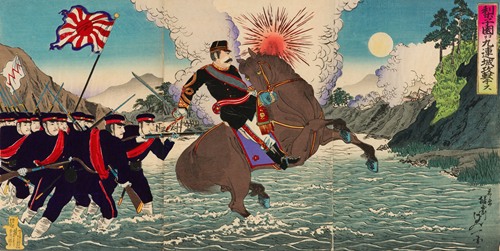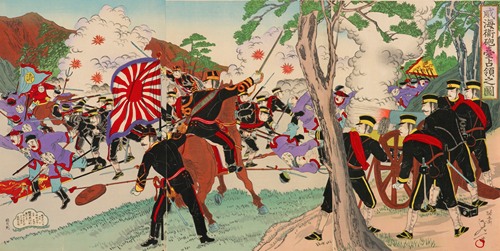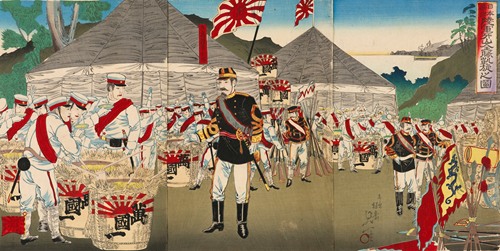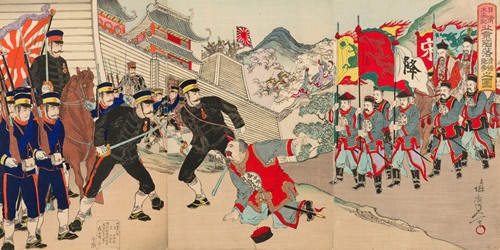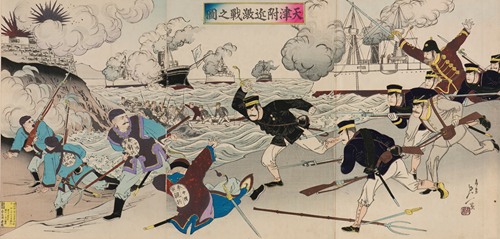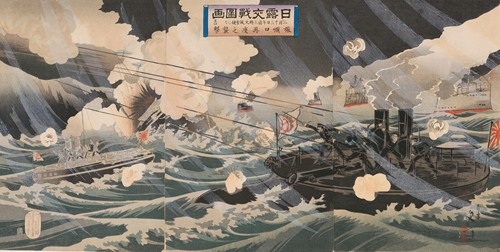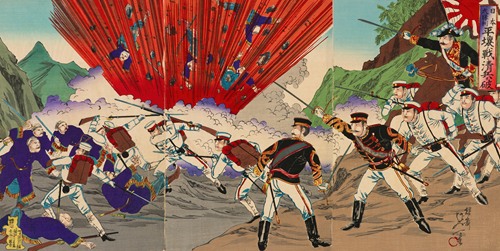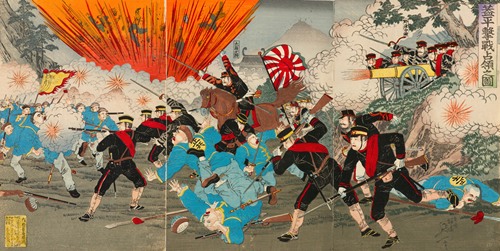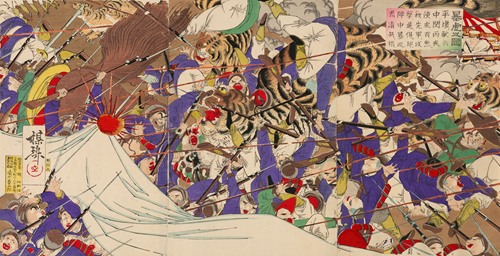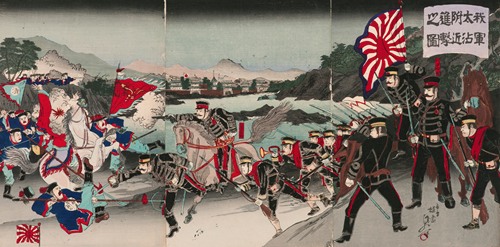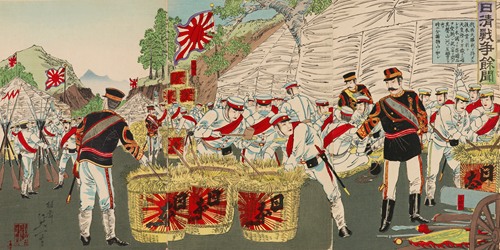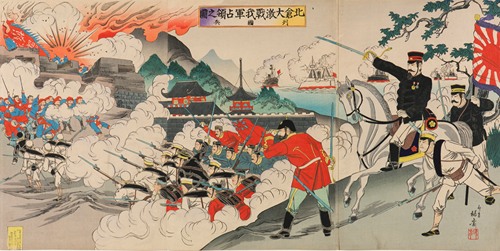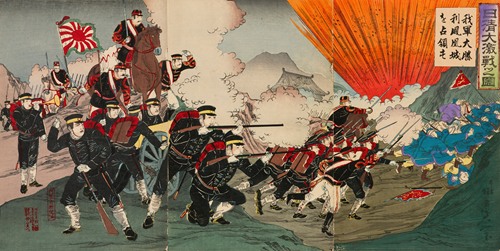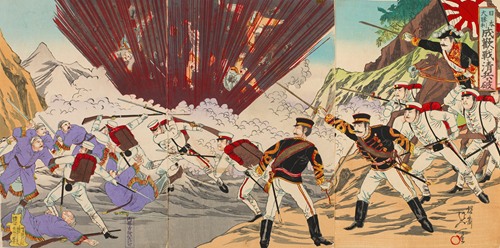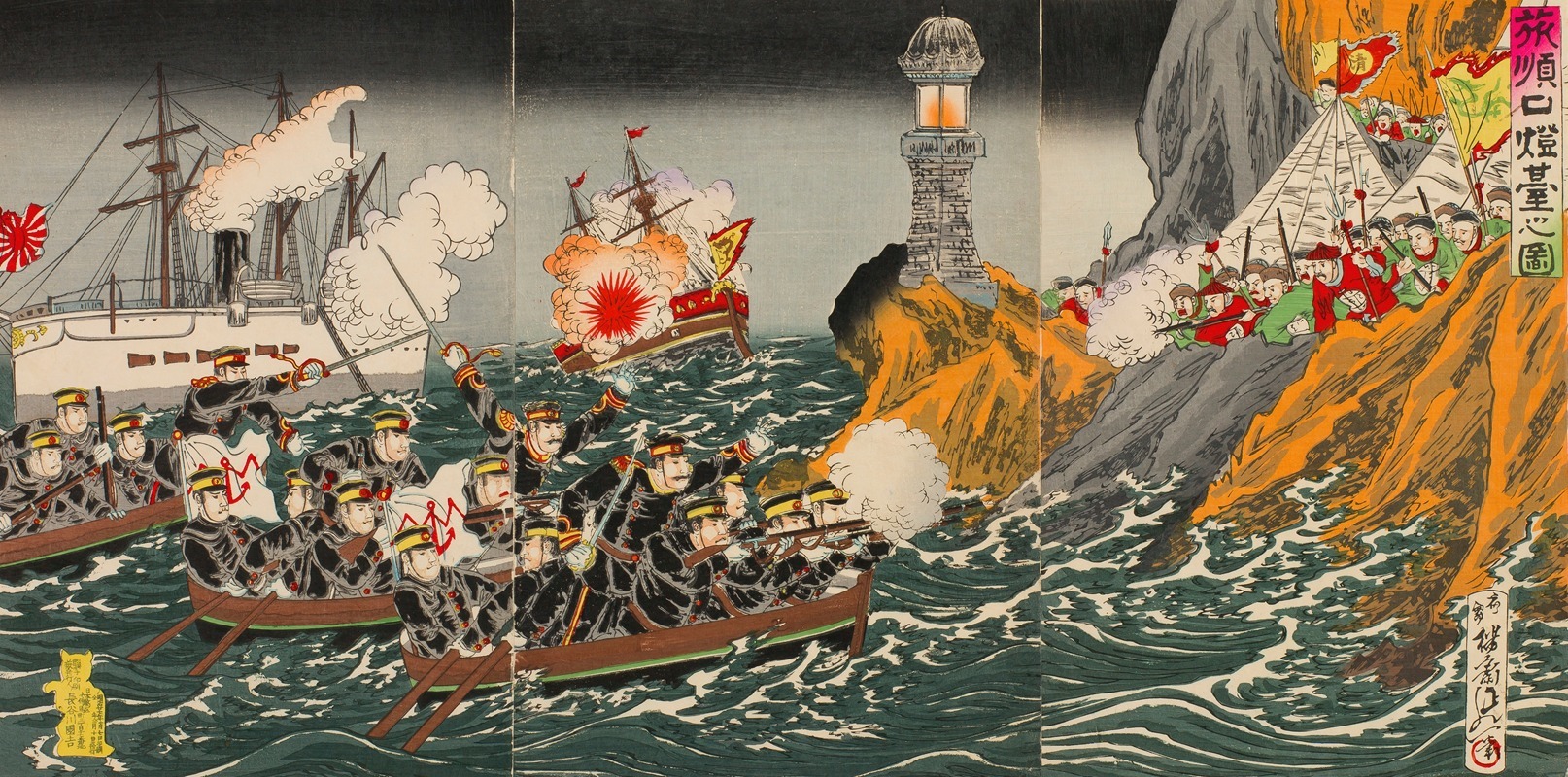
Tokyo print designer and painter. Considered the best student of Yōshū Chikanobu (1838-1912), who worked in a variety of genres from pictures of beautiful women (biinga) to famous views of modernizing Tokyo (kaika-e), including depictions of domestic industrial exhibitions, depictions of the emperor and empress, and Sino-Japanese and Russo-Japanese War prints (senso-e). He is perhaps best known for his war prints. During the Sino-Japanese War (1894-1895), Nobukazu did a considerable number of outstanding triptychs and made his reputation designing battle scenes on land and sea. He also produced lithographs.
More Artworks by Watanabe Nobukazu (View all 21 Artworks)
Watanabe Nobukazu (Japanese, c. 1872-1944)
Watanabe Nobukazu (Japanese, c. 1872-1944)
Watanabe Nobukazu (Japanese, c. 1872-1944)
Watanabe Nobukazu (Japanese, c. 1872-1944)
Watanabe Nobukazu (Japanese, c. 1872-1944)
Watanabe Nobukazu (Japanese, c. 1872-1944)
Watanabe Nobukazu (Japanese, c. 1872-1944)
Watanabe Nobukazu (Japanese, c. 1872-1944)
Watanabe Nobukazu (Japanese, c. 1872-1944)
Watanabe Nobukazu (Japanese, c. 1872-1944)
Watanabe Nobukazu (Japanese, c. 1872-1944)
